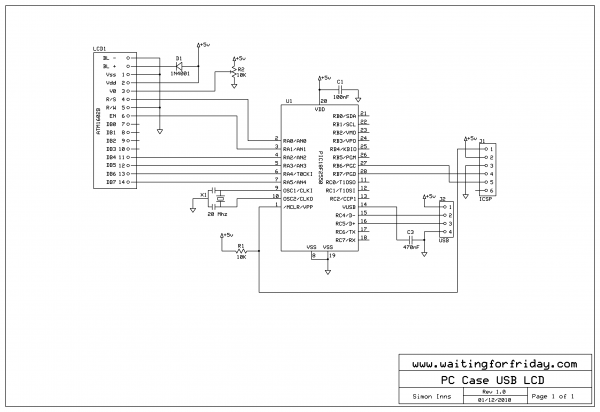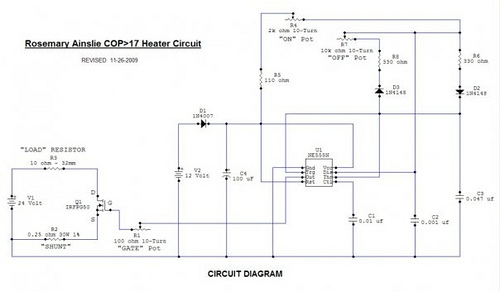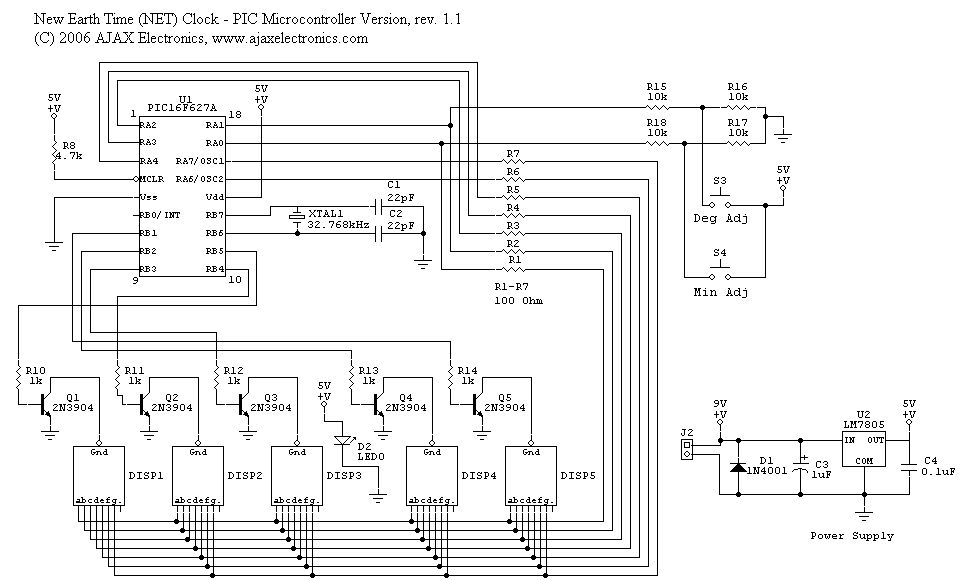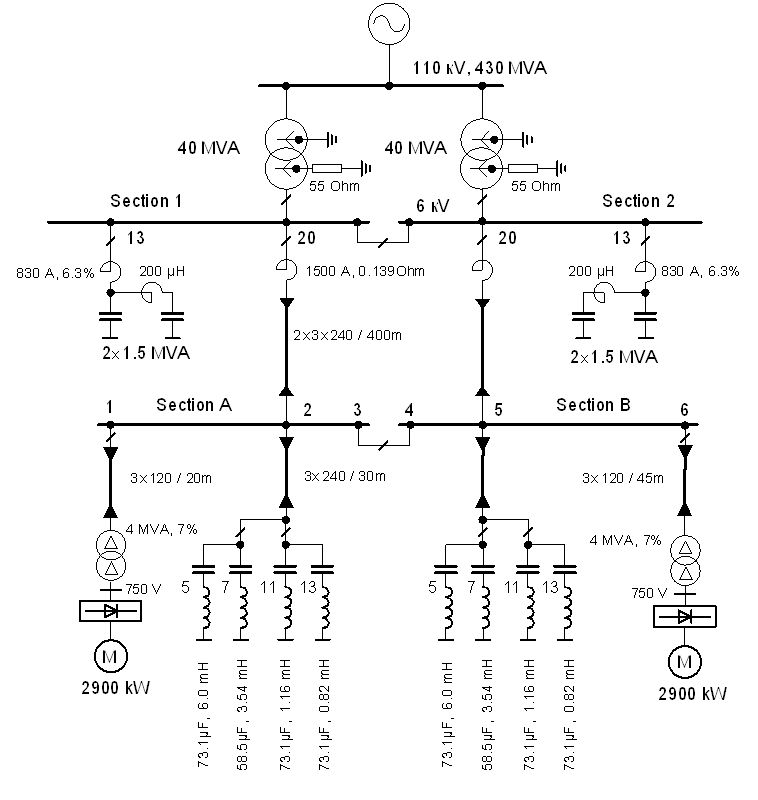
Case Modding
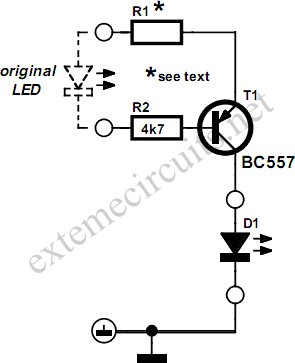
The aesthetics of case modding, which involves modifying a PC's enclosure, provide ample opportunities for discussion and original circuit designs. Low current LED indicators are typically installed in PC enclosures. While this approach conserves energy, the LEDs do not emit a particularly bright light. Replacing the low-current types with high-brightness variants is not straightforward, as the latter require a current of 20 mA compared to 2 mA. This discrepancy can, in some cases, lead to excessive load on the LED drivers on the motherboard, contrary to some claims. A solution involves employing a small external driver stage composed of two resistors and a transistor, mounted on a piece of perforated board and connected in place of the original LED. The new high-brightness LED connects between the output of the current source and a spare motherboard ground connection, such as on the infrared port or a grounded screw in the enclosure. Resistor R1 is responsible for maintaining the constant current. High-brightness red LEDs operate at 20 mA (R1 = 150 ohms), while high-brightness blue LEDs require 10 mA (R1 = 75 ohms). Given the variety of PC motherboards, it is uncertain whether this driver will be compatible with every system. To verify functionality, a DC voltmeter can be used to measure the voltage between the positive connection on the LED (usually a red wire or a pin marked with an arrow on the LED connector) and ground (not the other pin of the connector). A reading of +5 V, regardless of the LED's state, indicates that the driver can be utilized.
The proposed circuit modification enhances the visual output of LED indicators in PC enclosures while ensuring compatibility with typical motherboard configurations. The primary components include a transistor, which acts as a switch, and two resistors that set the appropriate current levels for the high-brightness LEDs. The transistor is connected to the motherboard LED driver output, allowing it to control the higher current needed for bright LED operation without overloading the motherboard's LED driver.
For the implementation, R1 is calculated based on the desired current for the LED type being used. For instance, if a high-brightness red LED is chosen, a resistor value of 150 ohms would be appropriate to limit the current to 20 mA. Conversely, for a high-brightness blue LED, a resistor value of 75 ohms would suffice to maintain a 10 mA current. The second resistor, often referred to as R2, can be used to provide additional stability in the circuit, minimizing fluctuations in current that could affect LED brightness or longevity.
The circuit's design should ensure that all connections are secure and that the perforated board is appropriately mounted within the PC enclosure to avoid short circuits. Additionally, the choice of grounding point is crucial; using a reliable ground connection will ensure that the LED operates effectively and that the circuit remains stable.
In summary, this modification not only increases the brightness of the LED indicators in PC enclosures but also preserves the integrity of the motherboard's LED driver. By carefully selecting resistor values and ensuring proper grounding, users can achieve a visually appealing enhancement to their PC's aesthetic without compromising functionality.The aesthetics of case modding` (modifying a PC`s enclosure) offer plenty of scope for debate and plenty of scope for original circuits. Low current LED indicators are usuallytted in PC enclosures. Although this certainly saves energy, the LEDs do not light particularly brightly. It is not completely straightforward to replace the low-current types with high-brightness types since the latter draw a current of 20 mA rather than 2 mA. This can - whatever people might tell you to the contrary - in some instances lead to excessive load on the LED drivers on the motherboard. The problem can be solved using a small external driver stage: two resistors and a transistor mounted on a small piece of perforated board, connected in place of the original LED.
The new high-brightness LED is then connected between the output of the current source and a spare motherboard ground connection (for example on the infrared port) or to a grounded screw in the enclosure. R1 is responsible for the constant current. High-brightness red LEDs are driven at 20 mA (R1 = 150 ), whereas high-brightness blue LEDs require 10 mA (R1 = 75 ).
In view of the large number of different PC motherboards available, it is not certain that this driver can be used in every PC. It is easy to check whether the circuit will work: use a DC voltmeter to measure the voltage between the positive connection on the LED (generally a red wire or a pin marked with an arrow on the LED connector) and ground (not the other pin of the connector).
If this reads +5 V independent of whether the LED is on or not, then the driver can be used. 🔗 External reference
The proposed circuit modification enhances the visual output of LED indicators in PC enclosures while ensuring compatibility with typical motherboard configurations. The primary components include a transistor, which acts as a switch, and two resistors that set the appropriate current levels for the high-brightness LEDs. The transistor is connected to the motherboard LED driver output, allowing it to control the higher current needed for bright LED operation without overloading the motherboard's LED driver.
For the implementation, R1 is calculated based on the desired current for the LED type being used. For instance, if a high-brightness red LED is chosen, a resistor value of 150 ohms would be appropriate to limit the current to 20 mA. Conversely, for a high-brightness blue LED, a resistor value of 75 ohms would suffice to maintain a 10 mA current. The second resistor, often referred to as R2, can be used to provide additional stability in the circuit, minimizing fluctuations in current that could affect LED brightness or longevity.
The circuit's design should ensure that all connections are secure and that the perforated board is appropriately mounted within the PC enclosure to avoid short circuits. Additionally, the choice of grounding point is crucial; using a reliable ground connection will ensure that the LED operates effectively and that the circuit remains stable.
In summary, this modification not only increases the brightness of the LED indicators in PC enclosures but also preserves the integrity of the motherboard's LED driver. By carefully selecting resistor values and ensuring proper grounding, users can achieve a visually appealing enhancement to their PC's aesthetic without compromising functionality.The aesthetics of case modding` (modifying a PC`s enclosure) offer plenty of scope for debate and plenty of scope for original circuits. Low current LED indicators are usuallytted in PC enclosures. Although this certainly saves energy, the LEDs do not light particularly brightly. It is not completely straightforward to replace the low-current types with high-brightness types since the latter draw a current of 20 mA rather than 2 mA. This can - whatever people might tell you to the contrary - in some instances lead to excessive load on the LED drivers on the motherboard. The problem can be solved using a small external driver stage: two resistors and a transistor mounted on a small piece of perforated board, connected in place of the original LED.
The new high-brightness LED is then connected between the output of the current source and a spare motherboard ground connection (for example on the infrared port) or to a grounded screw in the enclosure. R1 is responsible for the constant current. High-brightness red LEDs are driven at 20 mA (R1 = 150 ), whereas high-brightness blue LEDs require 10 mA (R1 = 75 ).
In view of the large number of different PC motherboards available, it is not certain that this driver can be used in every PC. It is easy to check whether the circuit will work: use a DC voltmeter to measure the voltage between the positive connection on the LED (generally a red wire or a pin marked with an arrow on the LED connector) and ground (not the other pin of the connector).
If this reads +5 V independent of whether the LED is on or not, then the driver can be used. 🔗 External reference

